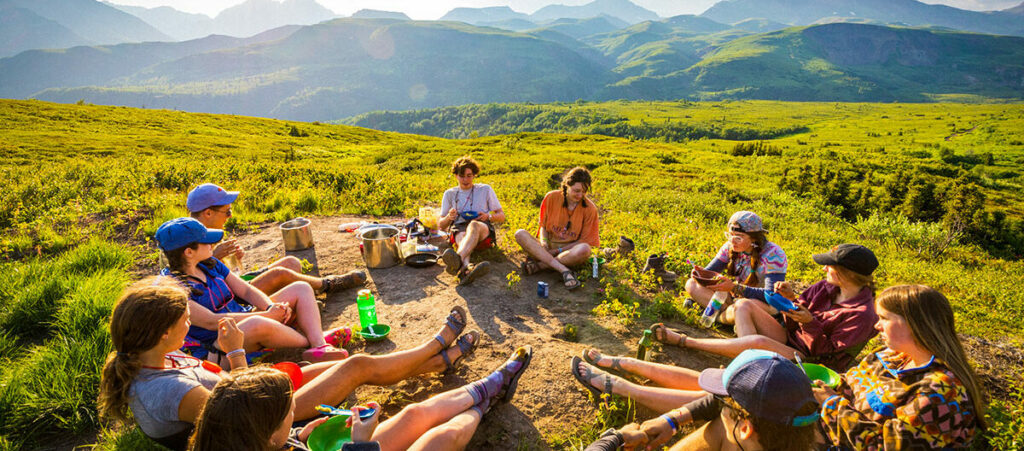A Typical Day at an Adventure Camp for Teens
What life is like at a teen adventure summer camp
When sending your children to a traditional sleepaway camp, you more or less know what their days will look like. They eat meals in the dining hall, they move from activity to activity on camp, they sometimes leave campus for different adventures, and they sleep in cabins at night.
But an adventure summer camp for teens that travels to different areas can leave parents scratching their heads. How do we get from place to place? Where does my child sleep each night? Where is their stuff stored? How do you cook without a kitchen? We are here to help paint a picture of what life at Adventure Treks is really like.
Each day is a little different
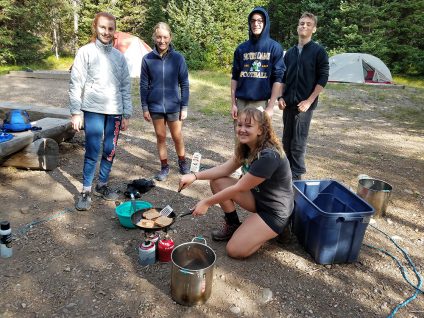 While the flow of activities is similar on every summer program we offer, each adventure has a unique itinerary and flavor. Let’s pick a typical day that every student will experience—say, day two of a four-day backpack—to see what it looks like:
While the flow of activities is similar on every summer program we offer, each adventure has a unique itinerary and flavor. Let’s pick a typical day that every student will experience—say, day two of a four-day backpack—to see what it looks like:
Students wake up in their tents around 6:30–7 a.m. (instructors wake up earlier) and start to prepare for the day; if the previous day was extra challenging or included an early wake-up, students may get to sleep a little later. Three students (of the same identifying gender) sleep in a four-person tent, and we switch up these tent groups throughout the trip.
Some students will help make breakfast while others will help pack up tents and group gear to get ready for that day’s hike. Other students will pack up food and clean dishes after breakfast.
Students will pack their backpacks, taking not only their personal gear, but also a portion of group gear (which might be a bag of food, a bear can, a stove, a pot and lid, etc.).
When our campsite has been packed up and swept for any remaining items or trash, groups will depart on that day’s hike, which may range from 3 to 10 miles, depending on the day and area.
Throughout our day of hiking, we’ll stop for what we call “packs on” and “packs off” breaks, which are exactly what they sound like. Packs on breaks are shorter and may include water stops, while packs off breaks allow students to take a breather, eat a snack, and perhaps play a game.
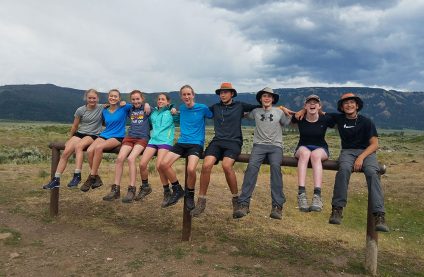 We’ll find a scenic place to eat lunch, which students will help prepare. After lunch, we’ll continue hiking if we’ve not yet reached our campsite, taking breaks as needed.
We’ll find a scenic place to eat lunch, which students will help prepare. After lunch, we’ll continue hiking if we’ve not yet reached our campsite, taking breaks as needed.
Once we reach our next campsite, some students will help prepare dinner while others will help set up tents and group gear for the evening. Games permeate evenings in the backcountry, ranging from purely fun activities like cards, mafia, or camouflage to more intentional community-building activities like our Skittles game (where we get to know each other on a deeper level).
After dinner, we’ll conclude with nightly evening meeting (which students may help lead, especially toward the end of the trip when everyone has become familiar with the process). This is an especially important and meaningful tradition at Adventure Treks, where everyone participates in hat ceremonies, reflects on the day with constructive feedback, and provides genuine praise and thoughtful compliments for their peers.
After a good night of sleep, we’ll wake up and do it all over again!
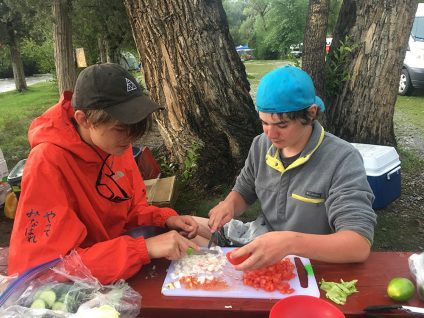 We eat well every day
We eat well every day
One of our parents’ and students’ most frequently asked questions pertains to meals at Adventure Treks. Fear not: We eat well, and we eat often; no freeze-dried packets here! We can cook almost anything you might prepare at home with our backcountry stoves (unless it requires an oven or microwave). We’ll always have three meals a day, with plenty of snacks throughout the day.
One of our instructors is the dedicated “food person” on each trip, meaning they’re in charge of menu-planning, portion sizes and quantities, shopping, etc. We’ll have protein for every meal and strive to include fresh fruits and vegetables as often as possible (though sometimes we’ll have dried fruit or veggies instead), and we always have “seconds” (and often third helpings) for our hungriest students.
We can easily accommodate vegetarians and most food allergies, including peanuts, tree nuts, soy, dairy, sesame, and gluten.
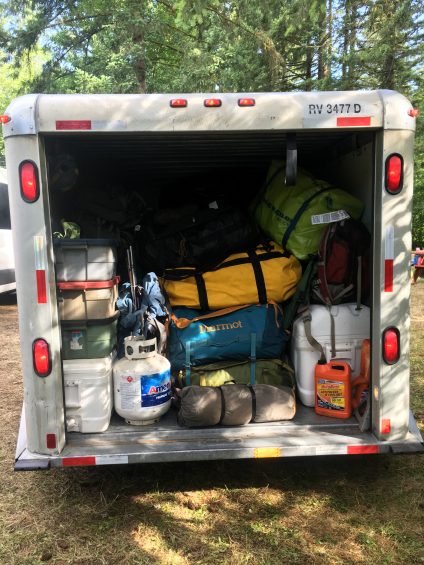
The U-Haul trailer is our “closet”
When you begin the packing process for an adventure camp, it can be a little overwhelming to see everything on the packing list in one big pile. We often hear, “how do they carry all their stuff throughout the trip?!” Throughout the trip, we travel in two (brand-new) 15-passenger Ford Transit vans. One of our vans tows a 6′ x 12′ U-Haul trailer behind it, which holds all of our gear (backpacks, duffels, bear cans, coolers, etc.).
Whatever we aren’t using for that day or next few days is stored and locked away in the trailer. E.g., for our backpack sections, we pack only what we need for those four to five days in our large backpacks, and everything else goes back into the duffels and into the trailer.
We hope this gives you a glimpse into what a typical day looks like at Adventure Treks. If you have any questions or would like to chat more about how our programs run, don’t hesitate to call us at 888-954-5555!
